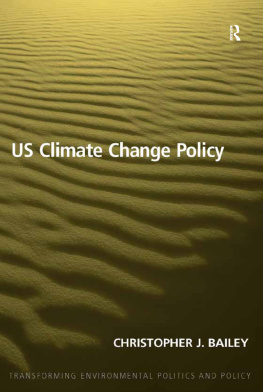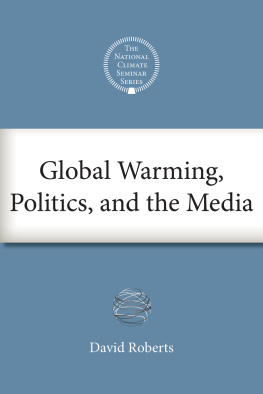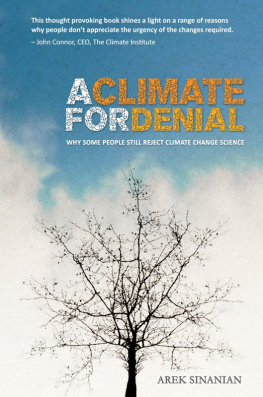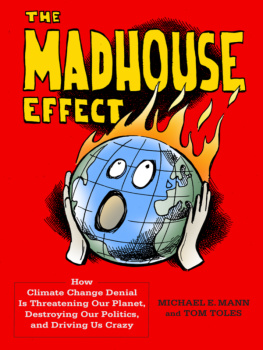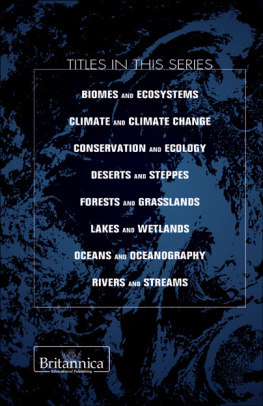
A HOLE
IN THE WIND
A Climate Scientists Bicycle
Journey Across the United States

DAVID GOODRICH

A HOLE IN THE WIND
Pegasus Books Ltd.
148 W. 37th Street, 13th Floor
New York, NY 10018
Copyright 2017 David Goodrich
First Pegasus Books edition June 2017
Interior design by Maria Fernandez
Interior maps by Lara Andrea Taber
Excerpt Two Tramps in Mud Time from the book The Poetry of Robert Frost , edited by Edward Connery Lathem. Copyright 1969 Henry Holt and Company, copyright 1936 by Robert Frost, copyright 1964 by Lesley Frost Ballantine. Reprinted by arrangement with Henry Holt and Company. All rights reserved.
All rights reserved. No part of this book may be reproduced in whole or in part without written permission from the publisher, except by reviewers, who may quote brief excerpts in connection with a review in a newspaper, magazine, or electronic publication; nor may any part of this book be reproduced, stored in a retrieval system, or transmitted in any form or by any means electronic, mechanical, photocopying, recording, or other, without written permission from the publisher.
Library of Congress Cataloging-in-Publication Data is available.
ISBN: 978-1-68177-431-2
ISBN: 978-1-68177-485-5 (e-book)
Distributed by W. W. Norton & Company
For Concetta
Though I sometimes wander off to far reaches of the solar system, you are the sun that pulls me back.
CONTENTS
O ne day in May, a few weeks after I retired, I turned left out of our Maryland driveway and rode my bicycle to Oregon. Three months would pass before Id see home again. The hardest part of the ride was, surprisingly, Kansas. I had assumed that riding across the great ocean of the Plains would be where the miles would rack up, where eighty- or hundred-mile days would be the rule. I hadnt counted on the big winds. For a cyclist, they are almost identical to hills but less predictable, and, unlike a hill, you cannot see the top. To further drive home my underestimation of the prairie, temperatures on the ride across Kansas hit 105F that June, enough for dehydration to be a real concern. My legs began to feel hollowed out. It was a struggle to stay upright. I broke the ride into three-mile stretches those days, and after each I would stop and pour water down my throat. I longed for a break in the blast-furnace conditionsa hole in the wind.
What I also found on my way across the country, along with heat and wind and mountains and snow, were stories. Land stories, to be more precise. I spent four years at sea during my career, and on board ship there is a fine tradition of the sea story. It is said that the difference between a fairy tale and a sea story is that one begins Once upon a time... and the other This is no shit... In this sense I accumulated more than a few land stories, and you may choose your own preamble.
For me, though, there was more to the ride than the collection of stories. As a climate scientist, I can see a hard time coming, for our country and our world, as climate change continues to unfold. For some things the effects are quite clear and predictable, as in the case of temperature change. While there will be interludes, the warming trend is both relentless and easy to see from the long-term records. Sometimes things are less predictable, like insect outbreaks and frequency of storms. What I seek to do in these pages, along with telling land stories, is connect the predictions of the science community with the people and places Ive seen from the seat of my bicycle. Id like to consider what the future might look like, and what we might do about it. To look for where there might be a hole in the wind.
After my time on research ships, I worked in climate science for over twenty-five years at the National Oceanic and Atmospheric Administration (NOAA). Three of those years were in Geneva, Switzerland, as director of the UN Global Climate Observing System office at the World Meteorological Organization (WMO). After driving ships, this was my best job. WMO is headquartered in a beautiful glass building looking out over Lake Geneva and the French Alps. My task was coordinating the global network of land, atmosphere, ocean, and space instruments that we use to track climate change. Though WMO can be slow moving and bureaucratic, theres something genuinely inspiring about people coming from around the world to work together. Soon after I arrived, I had a meeting upstairs with one of the vice presidents, who was also the head of the Iran Meteorological Organization. Going up the stairwell, I was both nervous and excited. I remember thinking, The Great Satan meets the Axis of Evil. How cool is this? Of course, they were gracious and professional, good folks, concerned about the same things I was. Climate doesnt know anything about national boundaries.
Along the way, I also ran the U.S. Global Change Research Program office in Washington, D.C., the coordinating body between the various federal agencies involved with climate change research. In the early part of my career, climate change was pretty esoteric science, though one with many universities and government agencies fully engaged. With time, climate became a full-fledged political issue, replete with spin and distortion. But fundamentally, the questions about climate havent changed. Theyre still about the science, about what quantifiable observations tell us about how the Earth is changing and what our best understanding can tell us about what changes lay in store. As the years went on, I grew frustrated with the dismissal of climate change or any possibility that humans could have a role in it. This notion has come to be known as climate denial, and its prominent in the popular and political discussion.
Climates not really that complicated, and I thought that I could explain it if given the chance. As I approached retirement, the idea came that maybe I could just ride my bike across the country and talk with people. My inspiration came from the movie Animal House : This situation requires a really futile and stupid gesture on somebodys part, and were just the guys to do it.
So on the ride across, I gave seventeen presentations in eight states about the science of climate change, mostly to school groups, typically high school or college students. The short version of the talk: its for real. More on that later. Showcasing the cross-country bike rig in the process, well, the medium was a bit of the message. Or maybe it was dislike of airline food taken to the extreme.
But the journey really started a decade before. I had been commuting to work by bike for some time. I gradually came to be aware of this thing called bicycle touring, the idea that there were people who cycled across states, countries, or even continents. At about .
Other bicycle journeys followed. After a while, the kids would begin to ask where Dads next adventure would be. Following the ride across to Oregon, I went from riding the Iroquois Warriors Path down the Appalachians to an Underground Railroad route, to a search for the site of the Lakota Ghost Dance. All of these form part of the story to come, and are shown on the map on first page of the image insert. The main route, and the thread of this book, leads across the country, east to west, Delaware to Oregon. But as in life, there are a few detours along the way.
Next page


